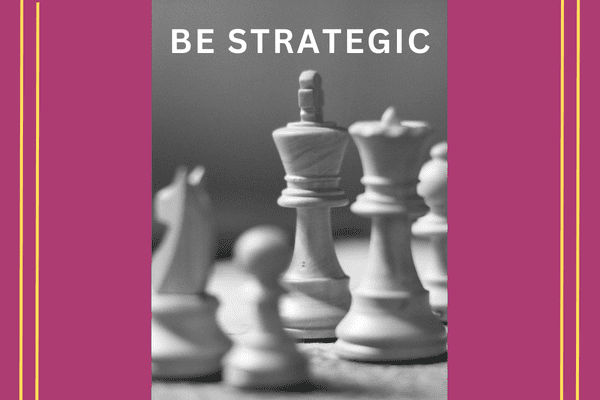Strategies to Transform Your Organisation
Understanding leadership is vital for implementing leadership strategies. Leadership is an essential ingredient for the success of any organisation, from a small startup to a large corporation. But what separates a good leader from a great one?
According to a survey conducted by the Center for Creative Leadership, 95% of managers who received coaching said it was worth their time and money, while 80% of participants said they had improved their ability to lead others as a result of coaching. This highlights the importance of understanding different leadership strategies and the impact they can have on team performance.
Adapt your style to inspire and motivate your team, whether you’re a CEO, middle manager, or new to your career. In this article, we’ll explore 10 different leadership strategies that can help you inspire and motivate your team to achieve their best.
1- Transformational Leadership

Transformational leadership is a leadership strategy that focuses on inspiring and motivating team members to achieve their full potential. This type of leader fosters a culture of growth and development, encouraging team members to take risks, learn from their mistakes, and continuously improve. Leaders who adopt a transformational approach can have a significant impact on their team’s performance and job satisfaction, resulting in increased productivity and retention.
Leading by Example
One way to inspire and motivate your team through transformational leadership is to lead by example. Remember, transformational leadership is about empowering your team to reach their full potential, so focus on building strong relationships, communicating clearly, and providing opportunities for growth and development.
2- Servant Leadership

Servant leadership is a powerful leadership strategy that focuses on prioritising the needs of your team members above your own. To embody servant leadership, consider the following tips:
- Listen actively to your team members and make an effort to understand their needs and concerns.
- Prioritise the development and growth of your team members by providing opportunities for training and professional development.
- Lead by example by demonstrating a strong work ethic and a willingness to help your team members when needed.
- Encourage collaboration and teamwork by creating an environment that fosters open communication and mutual support.
Sticky Learning ® is 7 times more effective than 1-day training courses. Plus, you will get a Chain of Evidence proving your Return on Investment. Discover soft skills training that changes behaviours long term.

Examples of Servant Leadership in Action
Servant leadership has been used by many successful leaders and organisations to achieve exceptional results. For example, Herb Kelleher, the co-founder of Southwest Airlines, was known for his servant leadership style. He focused on creating a culture of mutual respect and collaboration, where employees felt valued and empowered. This approach resulted in high levels of employee satisfaction and a strong sense of commitment to the company’s mission.
3- Situational Leadership

Situational leadership is a flexible leadership strategy that allows leaders to adapt their leadership style based on the specific needs and abilities of their team members. By understanding each team member’s unique strengths and weaknesses, you can tailor your approach to help them achieve their full potential. To apply situational leadership, consider the following tips:
- Diagnose the needs of each team member by assessing their abilities, experience, and motivation levels.
- Provide support and guidance to team members who need it, while also empowering those who are more experienced and capable.
- Monitor team performance and adjust your leadership style as needed to ensure that everyone is working together effectively.
Examples of Situational Leadership in Action
For example, a project manager might use a situational leadership approach when working with a team of software developers. They might provide more guidance and support to less experienced developers while giving more autonomy to those with more experience. This approach can help to improve team performance and ensure that everyone is working effectively toward the same goal. Another example is a manager who uses a situational leadership approach to manage a team with diverse skills and backgrounds.
4- Strategic Leadership

Strategic leadership is a forward-thinking leadership strategy that focuses on long-term goals and vision. To embody strategic leadership, consider the following tips:
- Understand the needs of your organisation by conducting market research and staying up-to-date with industry trends.
- Develop a clear vision and mission for your organisation that aligns with the needs of your stakeholders.
- Create a strategic plan that outlines specific goals, timelines, and performance metrics to measure progress.
- Communicate your vision and plan to your team members to ensure alignment and buy-in.
What Are the Types of Strategic Leadership?
There are several types of strategic leadership styles that leaders can adopt depending on their organisation’s needs and goals. These include:
- Visionary leadership: A leader with a clear vision of the future who inspires and motivates their team to work towards that vision.
- Collaborative leadership: A leader who prioritises collaboration and teamwork, encouraging their team to work together towards a common goal.
- Entrepreneurial leadership: A leader who takes calculated risks and is willing to innovate, paving the way for their organisation to succeed in a competitive market.
Examples of Strategic Leadership in Action
Strategic leadership has been used by many successful leaders and organisations to achieve exceptional results. For example, Steve Jobs was known for his strategic leadership approach when he co-founded Apple. He had a clear vision of the company’s potential and worked tirelessly to develop innovative products that would revolutionise the tech industry. This approach resulted in Apple becoming one of the most valuable companies in the world.
5- Inclusive Leadership

Inclusive leadership is a leadership strategy about creating a work environment where everyone feels valued and included, regardless of their background or identity. By prioritising diversity and inclusivity, leaders can reap numerous benefits for their teams and organisation. These include:
- Increased innovation and creativity: When individuals from diverse backgrounds work together, they bring unique perspectives and experiences to the table. This can lead to new ideas and innovative solutions to problems.
- Greater retention rates: When employees feel included and supported, they are less likely to leave the organisation. This can save time and resources in terms of recruiting and training new employees.
Promoting Diversity and Inclusivity
Leaders can take several steps to promote diversity and inclusivity within their teams and organisation. These include:
- Hiring and promoting individuals from diverse backgrounds: This can include individuals from different racial, ethnic, and cultural backgrounds, as well as individuals with disabilities or who identify as LGBTQ+.
- Providing training and education: Leaders can provide training on topics such as unconscious bias, cultural competency, and inclusive communication to help team members understand and appreciate differences.
- Encouraging open communication: Leaders can create a safe space for team members to share their experiences and perspectives, allowing for open dialogue and understanding.
By prioritising inclusive leadership, leaders can create a more welcoming and supportive work environment for all team members.
6- Collaborative Leadership

Collaborative leadership is a leadership strategy all about fostering teamwork and cooperation within a team or organisation. By prioritising collaboration, leaders can reap numerous benefits for their teams and organisation. These include:
- Increased creativity and innovation: When team members work together, they can generate new ideas and perspectives that may not have been possible otherwise.
- Higher employee engagement and job satisfaction: When employees feel that their contributions are valued and that they are part of a team, they are more likely to be engaged and satisfied with their work.
Examples of Collaborative Leadership
Many successful leaders have used a collaborative leadership approach to achieve success. For example, Elon Musk, the CEO of Tesla and SpaceX, is known for fostering collaboration and teamwork within his organisations. He encourages open communication and debate among his employees, which has led to many innovations and breakthroughs. Similarly, Ursula Burns, the former CEO of Xerox, is known for her collaborative leadership style. She worked to break down silos within the organisation and promote cross-functional collaboration, which led to increased efficiency and productivity.
7- Coaching Leadership

Coaching leadership is a leadership strategy about acting as a mentor or coach to team members to help them develop their skills and achieve their goals. By prioritising coaching, leaders can help their team members reach their full potential and achieve success. Some benefits of coaching leadership include:
- Improved performance and productivity: When team members receive guidance and feedback from their leader, they are more likely to improve their skills and perform better.
- Higher employee engagement: When employees feel that their leader cares about their growth and development, they are more likely to be engaged and committed to their work.
Examples of Coaching Leadership
Many successful leaders have used a coaching leadership approach to help their team members succeed. For example, Bill Campbell, the former CEO of Intuit, was known for his coaching leadership style. He acted as a mentor to many successful leaders in Silicon Valley, including Steve Jobs, Jeff Bezos, and Larry Page. Similarly, Mary Barra, the CEO of General Motors, is known for her coaching leadership style. She works closely with her team members to help them develop their skills and achieve their goals, which has led to increased innovation and success for the company.
8- Adaptive Leadership

In today’s fast-paced business world, leaders must be able to navigate through unexpected challenges and rapidly changing environments. Adaptive leadership is a leadership strategy that prioritises flexibility, creativity, and the ability to pivot in response to new situations.
Tips:
- Encourage open communication and brainstorming sessions with team members to generate innovative solutions to challenges.
- Practice active listening to ensure you are receiving feedback and input from all team members.
- Be willing to pivot strategies and plans based on new information and changing circumstances.
- Provide ongoing training and development opportunities to help team members build new skills and stay adaptable.
Examples
During the COVID-19 pandemic, many leaders were forced to quickly adapt their businesses to remote work environments. Amazon CEO Jeff Bezos has consistently demonstrated adaptive leadership throughout his career. He is known for encouraging risk-taking and experimentation, which has enabled the company to continually evolve and innovate in response to changing consumer demands.
9- Resilient Leadership

In addition to adaptability, resilience is a key trait of effective leaders in today’s business environment. Resilient leaders can bounce back from setbacks and continue to lead their teams with confidence and optimism, even in the face of adversity.
Tips
- Prioritise self-care and stress-management strategies to build personal resilience.
- Foster a positive team culture that encourages collaboration, support, and resilience.
- Provide clear guidance and direction to help team members stay focused on goals and outcomes.
- Celebrate successes and milestones to boost team morale and motivation.
Examples
- After Hurricane Katrina devastated New Orleans in 2005, retired General Russell Honoré led the military’s disaster response efforts. His resilience and determination to overcome obstacles and rebuild the city inspired his team and the wider community.
- Disney CEO Bob Iger has demonstrated resilience throughout his career, leading the company through numerous challenges, including the 9/11 attacks and the 2008 financial crisis. His ability to remain calm and focused during times of crisis has earned him respect and admiration from his team and industry peers.
10- Results-based Leadership

Results-based leadership is a leadership strategy that focuses on achieving specific, measurable outcomes within a set timeframe. Leaders who adopt this approach prioritise setting clear goals and creating a culture of accountability and ownership within their team.
One of the key benefits of a results-based leadership strategy is that it provides a clear direction and purpose for the team, which can increase motivation and drive performance. This focus on results helped Amazon become the world’s largest online retailer and revolutionise the e-commerce industry.
Tips for Results-Based Leadership
- Set clear and measurable goals for your team.
- Communicate expectations and hold team members accountable for their performance.
- Provide regular feedback and coaching to help team members improve and stay on track.
- Celebrate successes and recognise team members for their contributions to achieving results.
- Continuously evaluate and adjust your approach to ensure that you are effectively leading your team towards achieving the desired outcomes.
Delegation
Effective delegation is a crucial skill for leaders to master to maximise productivity and achieve organisational goals. By delegating tasks and responsibilities to team members, leaders can distribute workload, empower their team, and free up time for higher-level tasks. However, the delegation also requires a balance of trust, communication, and accountability to be successful.
One important aspect of delegation is identifying the right tasks to delegate to the right people. Leaders should take into account team members’ strengths, interests, and availability when deciding who to delegate to.
Continuous Learning for Leadership Strategies

Great leaders understand that there is always room for growth and improvement, and they prioritise their own personal and professional development. They also set an example for their team members, encouraging them to embrace a growth mindset and pursue their learning opportunities.
Examples of Leaders Embracing Continuous Learning
There are many examples of leaders who prioritise continuous learning and attribute their success to their commitment to personal and professional growth. For instance, Satya Nadella, the CEO of Microsoft, has made it a priority to learn about new technologies and encourages his team to do the same. In addition, Jeff Bezos, the founder of Amazon, has been known to read and study extensively, and he prioritises staying ahead of industry trends. These leaders understand the importance of staying relevant and adapting to change, which has allowed them to stay ahead of the curve and lead their organisations to success.
Tips for Prioritising Continuous Learning
There are many ways that leaders can prioritise their continuous learning, such as attending conferences, participating in training programs, seeking mentorship, and reading industry publications. Leaders can also prioritise learning opportunities for their team members, providing access to training and development programs and encouraging knowledge sharing within the team. By demonstrating a commitment to continuous learning, leaders can inspire their team members to do the same and create a culture of growth and development within their organisation.
The Takeaway for Leadership Strategies
In conclusion, leadership is a critical component of any successful organisation, and effective leadership involves a wide range of skills and approaches. Whether it’s inclusive leadership, collaborative leadership, coaching leadership, adaptive leadership, results-based leadership, or delegation, leaders must be adaptable and able to tailor their approach to the specific needs of their team and organisation.
By prioritising leadership strategy development and modelling a growth mindset, leaders can inspire their team members to do the same and create a culture of growth, learning, and innovation within their organisation.
Action: For even more useful content on leadership, check out our ultimate guide on Leadership Skills.




